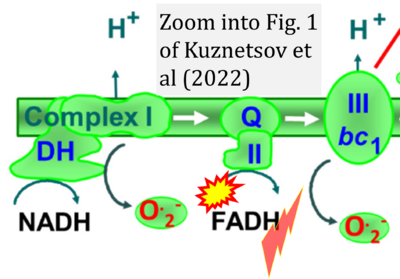Kuznetsov 2022 Antioxidants (Basel)
| Kuznetsov AV, Margreiter R, Ausserlechner MJ, Hagenbuchner J (2022) The complex interplay between mitochondria, ROS and entire cellular metabolism. Antioxidants (Basel) 11:1995. doi: 10.3390/antiox11101995 |
Kuznetsov AV, Margreiter R, Ausserlechner MJ, Hagenbuchner J (2022) Antioxidants (Basel)
Abstract: Besides their main function for energy production in form of ATP in processes of oxidative phosphorylation (OxPhos), mitochondria perform many other important cellular functions and participate in various physiological processes that are congregated. For example, mitochondria are considered to be one of the main sources of reactive oxygen species (ROS) and therefore they actively participate in the regulation of cellular redox and ROS signaling. These organelles also play a crucial role in Ca2+ signaling and homeostasis. The mitochondrial OxPhos and their cellular functions are strongly cell/tissue specific and can be heterogeneous even within the same cell, due to the existence of mitochondrial subpopulations with distinct functional and structural properties. However, the interplay between different functions of mitochondria is not fully understood. The mitochondrial functions may change as a response to the changes in the cellular metabolism (signaling in). On the other hand, several factors and feedback signals from mitochondria may influence the entire cell physiology (signaling out). Numerous interactions between mitochondria and the rest of cell, various cytoskeletal proteins, endoplasmic reticulum (ER) and other cellular elements have been demonstrated, and these interactions could actively participate in the regulation of mitochondrial and cellular metabolism. This review highlights the important role of the interplay between mitochondrial and entire cell physiology, including signaling from and to mitochondria.
• Bioblast editor: Gnaiger E
Correction: FADH2 and Complex II
- FADH2 is shown as the substrate feeding electrons into Complex II (CII). This is wrong and requires correction - for details see Gnaiger (2024).
- Gnaiger E (2024) Complex II ambiguities ― FADH2 in the electron transfer system. J Biol Chem 300:105470. https://doi.org/10.1016/j.jbc.2023.105470 - »Bioblast link«
Labels:
Enzyme: Complex II;succinate dehydrogenase


